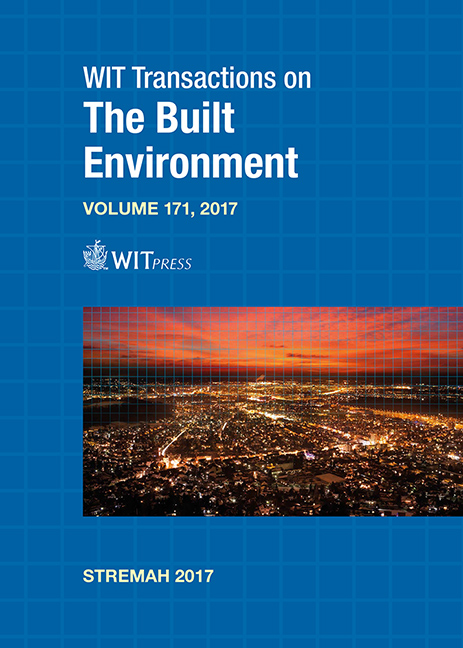LIDAR AND GIS TECHNIQUES IN THE SURVEY AND MONITORING OF BUILT HERITAGE: APPLICATION TO THE MAIN FRONTAGE OF THE CHURCH OF BIAR
Price
Free (open access)
Transaction
Volume
171
Pages
9
Page Range
53 - 61
Published
2017
Paper DOI
10.2495/STR170051
Copyright
WIT Press
Author(s)
JOSÉ ANTONIO HUESCA TORTOSA, DAVID TORREGROSA FUENTES, MIGUEL LOUIS CERECEDA, YOLANDA SPAIRANI BERRIO
Abstract
In Biar, a town located within the province of Alicante, is located the Church of Nuestra Señora de la Asunción, declared as an Asset of Cultural Interest (BIC) since 1982. The church began to be built in the 15th century and still preserves today the most important Proto-Renaissance-style main frontage of the Valencian community. The construction of this façade is documented from 1529 by masters of carving and painting and it presents a great architectural and sculptural value for its time. Unfortunately, due to the location and orientation of the building, characteristics of the materials used, subsequent interventions and exposition to the environmental effects, the church presents a worrying conservation state which makes at least a preliminary diagnostic study necessary as a basis for eventual interventions.The diagnostic study presented in this paper uses non-destructive techniques based on the 3D-digitalization by scanning and obtaining the building point cloud for checking and monitoring deformations and movements of the targeted building and, particularly all integrating elements. Furthermore, this technique helps us to appreciate through successive scanning in time, the possible degradation of the stone material and material losses undergone by the elements under study, and together with the use of other software for the treatment and the comparison of point clouds (LIDAR) and geographic information systems (GIS), the ability to catalogue and analyse the evolution of this kind of damage, in addition to their application as useful tools in architectural archaeology. The results obtained have allowed the identification of zones with a higher degradation rate requiring urgent intervention, in addition to quantify the loss of material suffered in this period.
Keywords
Biar, Church of Biar, church façade of Biar, diagnostic study, point cloud, LIDAR, SIG, GIS




